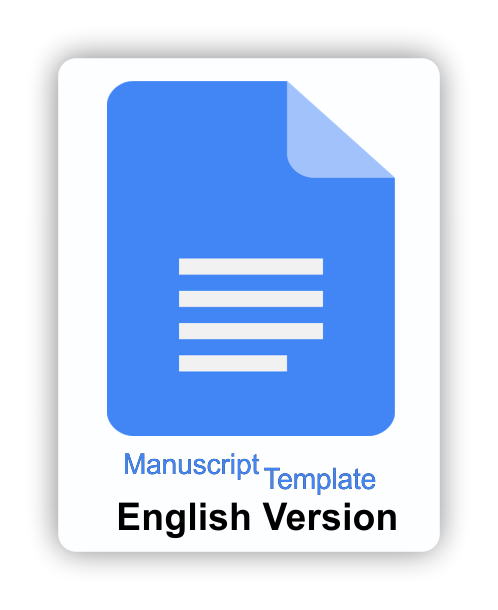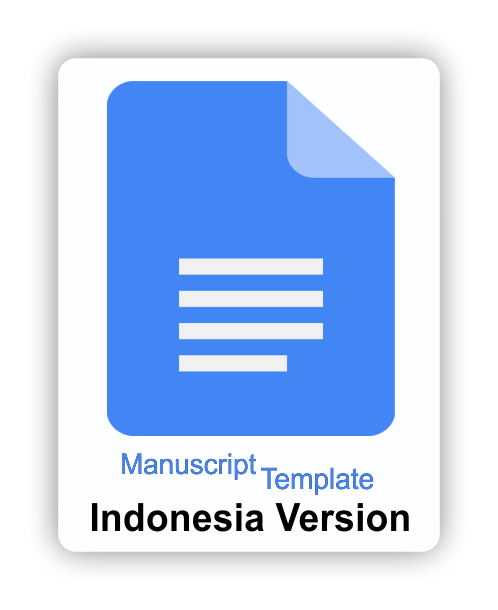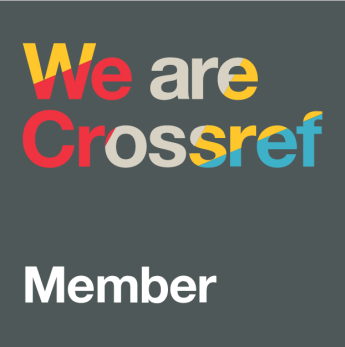ICT-based social science learning management with Nearpod application in primary education
Downloads
Achmad, R. K., & Mulyati, Y. (2023). The perceptions of high school teachers and students towards digital interest and literacy. Jurnal Inovasi Teknologi Pendidikan, 10(3), 283–297. https://doi.org/10.21831/jitp.v10i3.58804
Afif, F. A., & Zulherman. (2022). Pengaruh faktor kepuasan dan self-efficacy terhadap minat siswa sekolah dasar menggunakan aplikasi Nearpod: An extended Delone McLean model. Jurnal Cakrawala Pendas, 8(4), 1065–1080. https://doi.org/10.31949/jcp.v8i2.2818
Ahmed, A. M., & Elmubark, A. Y. (2022). An investigation into using Nearpod as an interactive tool to aid students' achievement and motivation for learning educational technology. Research on Humanities and Social Sciences, 12(4), 1–10. https://doi.org/10.7176/rhss/12-4-01
Amelia, R., Zamzani, Mustadi, A., Suriansyah, A., & Aslamiah. (2024). Student's acceptance of the Nearpod application: An investigation in elementary school. International Journal of Evaluation and Research in Education, 13(2), 682–692. https://doi.org/10.11591/ijere.v13i2.26619
Anggoro, K. J., Khasanah, U., & Milnes, N. (2022). Nearpod slides to enhance students' self-study. Studies in Self-Access Learning Journal, 13(4), 442–446. https://doi.org/10.37237/130405
Aulia, U., & Baalwi, M. A. (2022). Pengembangan multimedia interaktif berbasis Nearpod pada tema 6 subtema perubahan energi Kelas III MI Roudlotul Mustashlihin Sukodono. Jurnal Muassis Pendidikan Dasar, 1(1), 54–68. https://doi.org/10.55732/jmpd.v1i1.9
Banjarnahor, Y. D. M., & Tarigan, D. (2023). Nearpod-based interactive learning media in improving learning outcomes of class V elementary school students. Indonesian Journal of Advanced Research, 2(6), 767–778. https://doi.org/10.55927/ijar.v2i6.4554
Bradley, V. M. (2021). Learning management system (LMS) use with online instruction. International Journal of Technology in Education, 4(1), 69–92. https://doi.org/10.46328/ijte.36
Burton, R. (2019). A review of Nearpod – an interactive tool for student engagement. Journal of Applied Learning & Teaching, 2(2), 95–97. https://doi.org/10.37074/jalt.2019.2.2.13
Carrillo-Yalán, M. E., Vargas-Trujillo, C. E., Villarreal-Montenegro, Y., Carrillo-Yalán, E. M., Suyo-Vega, J. A., & Puican, H. N. (2023). Use of Nearpod and blum modeling to strengthen the academic performance of university students in mathematics. Academic Journal of Interdisciplinary Studies, 12(5), 224–234. https://doi.org/10.36941/ajis-2023-0140
Creswell, E. L. (1998). The design of computer based instruction. Macmillan Publishing Company.
Dewi, S. Z., & Hilman, I. (2018). Penggunaan TIK sebagai sumber dan media pembelajaran inovatif di sekolah dasar. Indonesian Journal of Primary Education, 2(2), 47–53. https://doi.org/10.17509/ijpe.v2i2.15100
Fauziah, J. R., Astutik, S., Suratno, Kurnianto, F. A., & Nurdin, E. A. (2024). Pengaruh model problem based learning (PBL) berbantuan Nearpod terhadap kemampuan berpikir kritis dan hasil belajar geografi siswa SMA. Majalah Pembelajaran Geografi, 7(1), 12–21. https://doi.org/10.19184/pgeo.v7i1.46816
Feri, A., & Zulherman. (2021). Development of Nearpod-based e module on science material "energy and its changes" to improve elementary school student learning achievement. International Journal of Education and Learning, 3(2), 165–174. https://doi.org/10.31763/ijele.v3i2.400
Fitriani, Y. (2020). Analisa pemanfaatan learning management system (LMS) sebagai media pembelajaran online selama pandemi COVID-19. Journal of Information System, Informatics and Computing, 4(2), 1–8. https://doi.org/10.52362/jisicom.v4i2.312
Gunawan, R. D., Sutisna, A., & Ana, E. F. (2024). Literature review: The role of learning management system (LMS) in improving the digital literacy of educators. Jurnal Inovasi Teknologi Pendidikan, 11(2), 116–123. https://doi.org/10.21831/jitp.v11i2.56326
Hakami, M. (2020). Using Nearpod as a tool to promote active learning in higher education in a BYOD learning environment. Journal of Education and Learning, 9(1), 119–126. https://doi.org/10.5539/jel.v9n1p119
Halnanelis, & Ulyanti, A. (2023). Pengembangan media pembelajaran ICT berbasis platform Nearpod untuk meningkatkan motivasi siswa pada materi sejarah perkembangan Islam di Asia Tenggara. Jurnal Basicedu, 7(6), 3886–3894. https://doi.org/10.31004/basicedu.v7i6.6426
Hopeman, T. A., Hidayah, N., & Anggraeni, W. A. (2022). Hakikat, tujuan dan karakteristik pembelajaran IPS yang bermakna pada peserta didik sekolah dasar. Jurnal Kiprah Pendidikan, 1(3), 141–149. https://doi.org/10.33578/kpd.v1i3.25
Mastura, A., Dewi, S. L., Misnar, Zuhra, I., & Misnawati. (2023). Boosting the L2 learners' reading comprehension capability by employing Nearpod media. IJORER : International Journal of Recent Educational Research, 4(6), 877–888. https://doi.org/10.46245/ijorer.v4i6.431
McClean, S., & Crowe, W. (2017). Making room for interactivity: Using the cloud-based audience response system Nearpod to enhance engagement in lectures. FEMS Microbiology Letters, 364(6), 1–7. https://doi.org/10.1093/femsle/fnx052
MÄ›kota, T., & Marada, M. (2020). The influence of the Nearpod application on learning social geography in a grammar school in Czecha. Education and Information Technologies, 25(6), 5167–5184. https://doi.org/10.1007/s10639-020-10214-3
Nabilah, K. N. (2024). Pengaruh penggunaan Nearpod sebagai media pembelajaran interaktif dalam pembelajaran bahasa Indonesia. Jurnal Belaindika: Pembelajaran Dan Inovasi Pendidikan, 6(1), 49–55. https://doi.org/10.52005/belaindika.v6i1.139
Nafisah, D., & Ghofur, A. (2020). Pengembangan media pembelajaran scan barcode berbasis Android dalam pembelajaran IPS. EduTeach : Jurnal Edukasi Dan Teknologi Pembelajaran, 1(2), 144–152. https://doi.org/10.37859/eduteach.v1i2.1985
Naumoska, A., Rusevka, K., Blazhevska, A., & Stojanovska, M. (2022). Nearpod as a tool for increasing students' motivation for learning chemistry. International Journal of Education and Learning, 4(1), 89–99. https://doi.org/10.31763/ijele.v4i1.616
Oktafiani, & Mujazi. (2022). Pengaruh media pembelajaran Nearpod terhadap motivasi belajar pada mata pelajaran matematika. JPGI (Jurnal Penelitian Guru Indonesia), 7(1), 124–134. https://doi.org/10.29210/022033jpgi0005
Oktaviani, R., & Nurhamidah, D. (2023). Efektivitas penggunaan media pembelajaran interaktif Nearpod pada mata pelajaran bahasa Indonesia. Jurnal Didaktika Pendidikan Dasar, 7(2), 717–726. https://doi.org/10.26811/didaktika.v7i2.1121
Pramesti, A. D., Masfuah, S., & Ardianti, S. D. (2023). Media interaktif Nearpod guna meningkatkan hasil belajar siswa sekolah dasar. Jurnal Educatio, 9(1), 379–385. https://doi.org/10.31949/educatio.v9i1.4578
Pupah, E. M., & Sholihah, U. (2022). Enhancing EFL students' reading learning process in COVID-19 pandemic through Nearpod. Englisia: Journal of Language, Education, and Humanities , 9(2), 17–31. https://doi.org/10.22373/ej.v9i2.10400
Putri, V. M., & Amini, R. (2023). Integrated thematic E-LKPD with RADEC-based Nearpod in grade V elementary school. International Journal of Elementary Education, 7(2), 204–211. https://doi.org/10.23887/ijee.v7i2.61224
Rofiq, N., Rafiq, A., & Wardani, M. A. (2020). Pembelajaran kontekstual pada mata pelajaran ilmu pengetahuan sosial (IPS). Dirasah : Jurnal Studi Ilmu Dan Manajemen Pendidikan Islam, 3(2), 98–105. https://doi.org/10.29062/dirasah.v3i2.129
Sarginson, D., & McPherson, S. (2021). Nearpod: An innovative teaching strategy to engage students in pathophysiology/pharmacology. Journal of Nursing Education, 60(7), 422–423. https://doi.org/10.3928/01484834-20210616-13
Sari, R., & Hasanah, M. (2019). Social studies based learning technology, information, and communication in SMP- SMIP 1946 Banjarmasin. The Innovation of Social Studies Journal, 1(1), 40–45. https://doi.org/10.20527/iis.v1i1.1261
Siswati, B. H., Suratno, Hariyadi, S., Prihatin, J., Wahono, B., & Rosyadah, A. (2023). The effectiveness of nearpod assisted digital daily assessment to improve the creative thinking abilities and metacognitive skills of science students. BIO-INOVED : Jurnal Biologi-Inovasi Pendidikan, 5(3), 281–290. https://doi.org/10.20527/bino.v5i3.16921
Sugiyono. (2017). Metode penelitian: Kuantitatif, kualitatif, dan R&D. Alfabeta.
Syahrir, D., Ahmad, S., Miaz, Y., & Kadri, H. Al. (2023). Development of electronic student worksheets using Nearpod and the RADEC learning model in social science subjects in elementary schools. Jurnal Penelitian Pendidikan IPA, 9(Special), 44–51. https://doi.org/10.29303/jppipa.v9ispecialissue.6016
Tiwan, & Ningsih, T. (2022). Inovasi pembelajaran IPS melalui technological pedagogical content knowledge (TPACK). Jurnal Cakrawala Pedas, 8(4), 1385–1395. https://doi.org/10.31949/jcp.v8i4.3233
Vinolo-Gil, M. J., García-Campanario, I., Lagares-Franco, C., Gonzalez-Medina, G., Rodríguez-Huguet, M., & Martín-Vega, F. J. (2022). Satisfaction level and performance of physiotherapy students in the knowledge of musculoskeletal disorders through Nearpod: Preliminary reports. International Journal of Environmental Research and Public Health, 20(99), 1–16. https://doi.org/10.3390/ijerph20010099
Wulandari, I. A., Maspupah, M., & Sholikha, M. (2023). Analysis of critical thinking skills of students assisted with Nearpod media on ecosystem materials. Pedagonal: Jurnal Ilmiah Pendidikan, 7(1), 58–63. https://doi.org/10.55215/pedagonal.v7i1.6008
The journal allows the author(s) to hold the copyright without restrictions. Finally, the journal allows the author(s) to retain publishing rights without restrictions
 | Jurnal Inovasi Teknologi Pendidikan by http://journal.uny.ac.id/index.php/jitp is licensed under a Creative Commons Attribution-ShareAlike 4.0 International License. |























